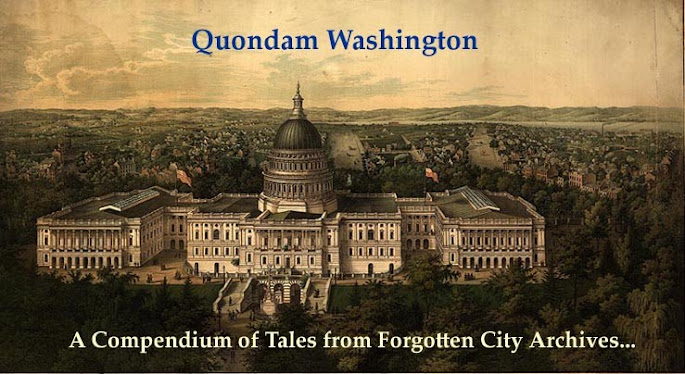 Nineteenth Century New York had its Forty Thieves gang, which operated in the Five Points area of Manhattan. So too did Washington.
Nineteenth Century New York had its Forty Thieves gang, which operated in the Five Points area of Manhattan. So too did Washington. The only trouble with researching the Forty Thieves is that the group was so fluid that it may have been more than one, spread out over the city and operating until 1923, when the last of the gang was “captured.”
One such named gang surfaced in Georgetown. Its members were both black and white, and sufficiently organized that they carried membership cards and, by the mid-nineties, wore silver badges. Each took an oath of eternal loyalty to each other and the group. And by all indications, they were astonishingly young.
In January of 1883, Georgetown’s Forty Thieves appeared in court, charged with a variety of petty offenses:
• Collectively, Charles Bannon, George Dayton, Lemuel Finnecome, Joseph Jenkins, William Johnson, Alexander Walker and Thomas Wynne were convicted of stealing a keg of beer from the wagon of one John O. Guethler, for which they were give a one month jail sentence;
• Bannon, Dayton, Jenkins and Walker received an additional one-month sentence for having stolen five bottles of beer from a wagon belonging to Charles C. Bryan.
• Jefferson got a third month for having stolen brooms from a shop owned by William Keifer.
• Walker and Finnecome were also given extra sentencing for stealing a batch of cakes from one Henry Ruppert’s wagon. In this instance, Walker had threatened the baker with a gun.
Nine years later, we find four gang members in court charged with stealing jewelry, stationery and “Florida water,” for which they were given a lecture and a warning.
By 1895, we find the Forty Thieves headed by a young man named Bernard Dyer—or “Reddy the Brave”—known by Georgetown’s constabulary as “the worst boy in the crowd.” Bernard claimed he wasn’t sure of his exact age, but police estimated him to be only ten years old. His hair, said the Post, was as red “as they hair which has done so much to make Mrs. Leslie Carter a ‘famous actress.’”
Under Bernard’s leadership, the gang was said to be responsible for nearly every crime committed in the Georgetown precinct in several months—robbing stores and “smoking cigarettes.”
According to the Post, he lived with his mother in the 32nd block of O Street in Georgetown—that is until Detective Frank Burrows arrested him for robbing Clinton’s Jewelry Store on M Street.
Confronted with the evidence of this and several other robberies, young Bernard gave in: “Ise guilty, judge, an’ der ain’t no use of tryin’ ter bluff yer.” He was sentenced to Reform School and “took his punishment with a smile,” grateful he hadn’t been given a worse sentence.
Who Bernard was and what became of him isn't known. There is no record of him in the Georgetown census--and he appears to have vanished into Washington history.


2 comments:
Having just finished "The Winter's Tale" by Halpern about NY, I find it hard to conceive of the Short Tails or other gangs in NY being connected with the Washington underworld... a long way to travel in those days.
Hi, Bog--and thanks for the comment. Researching Eddie and Lil took many years--and much of it was conducted before the advent of the internet.
What started me on my quest was the fact that Lil was my grandfather's cousin, much to the embarrassment of family at the time of the murder. I have sitting close by a plethora of old photocopies of Star and Post articles, taken during my research at the DC Library's wonderful Washingtoniana Room--some of which I'll shortly scan and try to post on the web. I can assure you that my research was meticulous and thorough--here I thought I was simply going to write about two characters, and I had no idea of the connections to NY criminal gangs. If you have access to old Post files, check it out; I've since lost my subscription.
I suppose the allure for the NY gangs was the belief that through Eddie, they could gain some power over the really powerful forces in national politics.
And as for the distance, well, I suppose provincial DC was as far away as today's slowest Amtraks--and perhaps only a six hour drive away, if you happened to have a really snappy roadster.
Cheers, and thanks for the comment!
Post a Comment